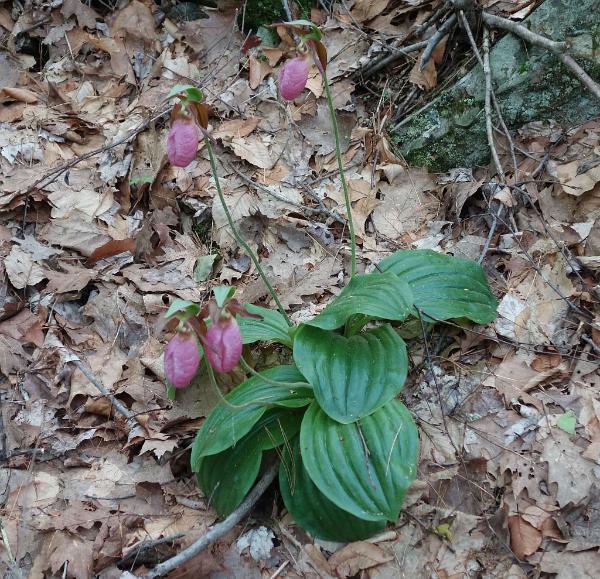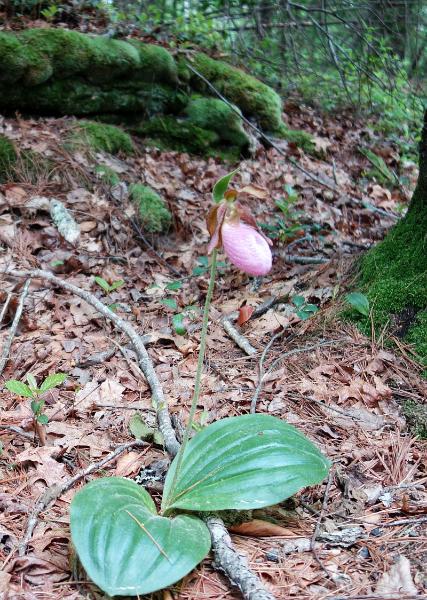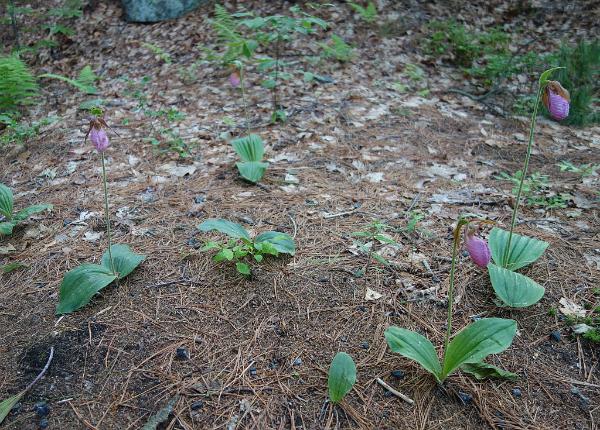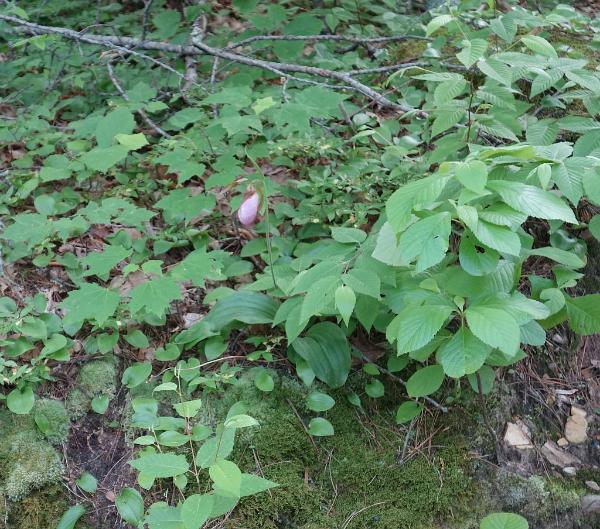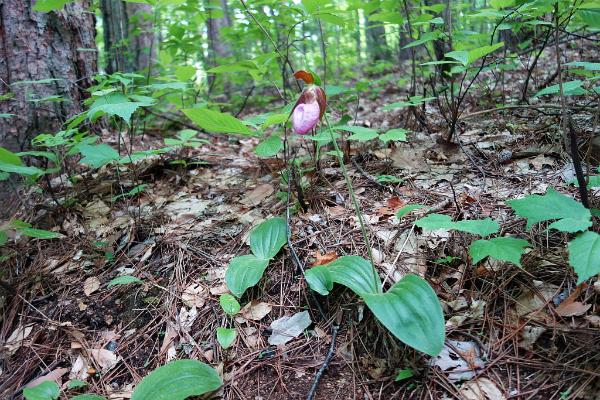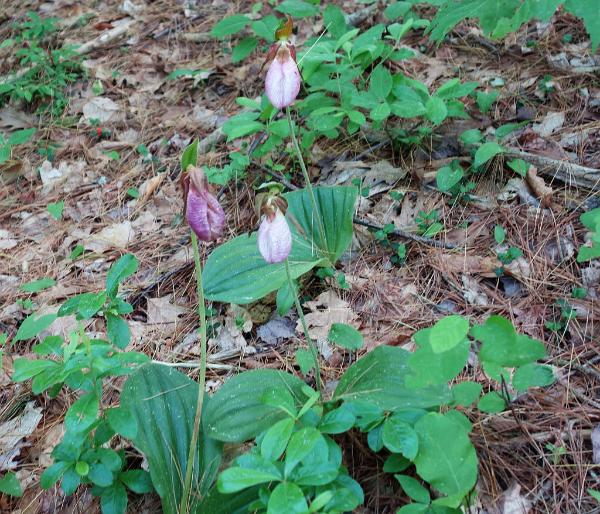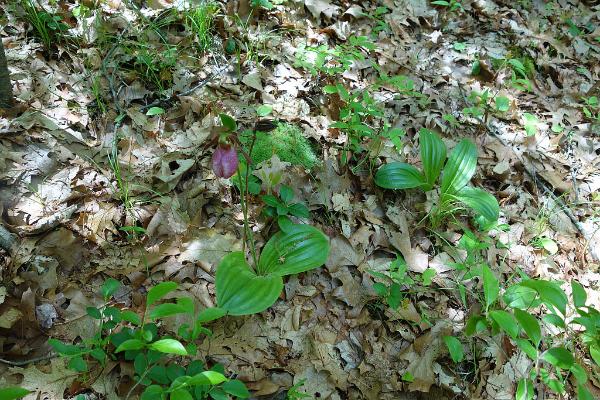


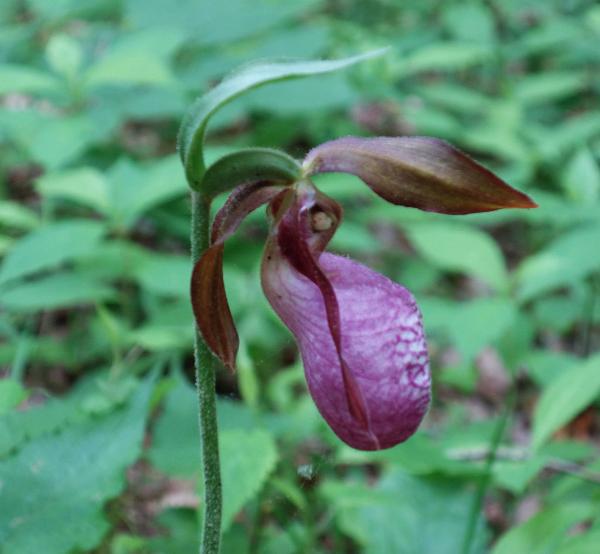


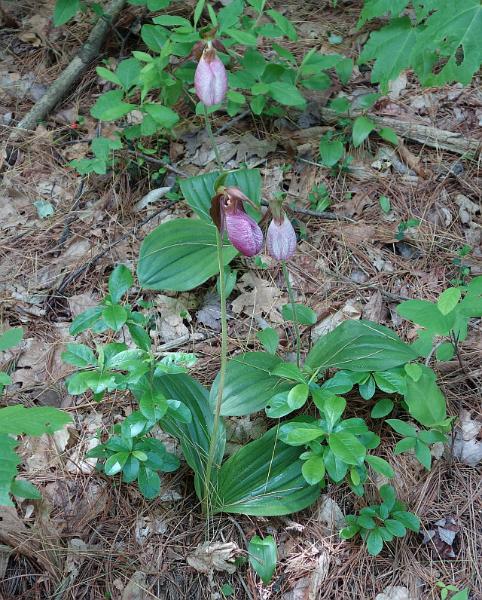



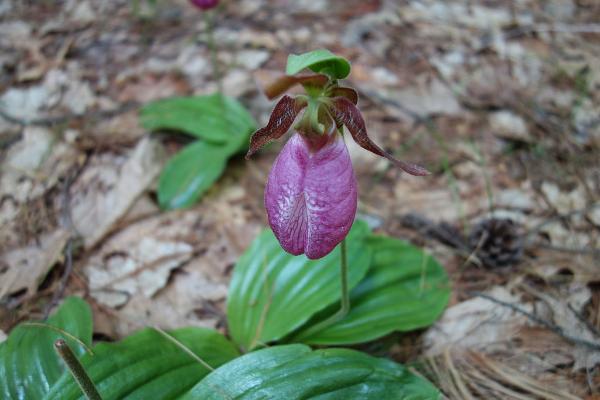
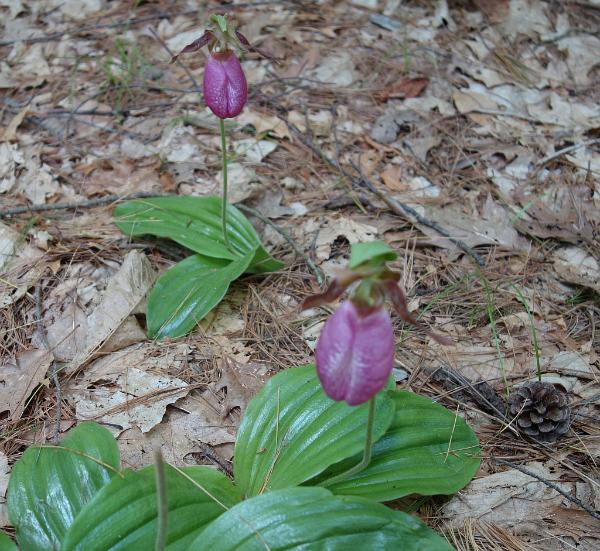
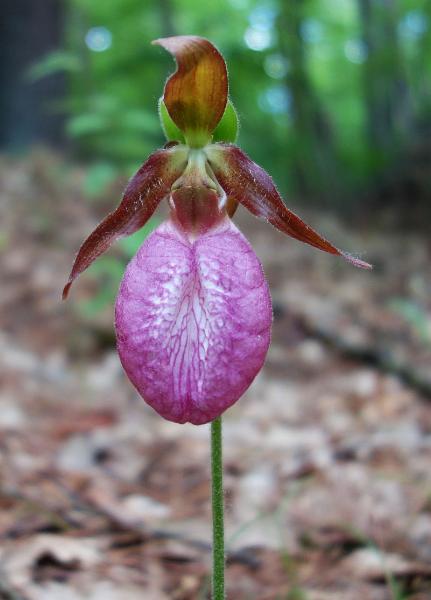

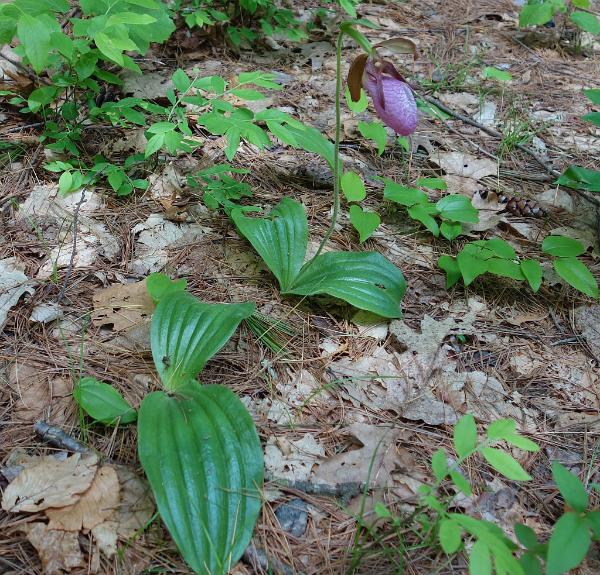
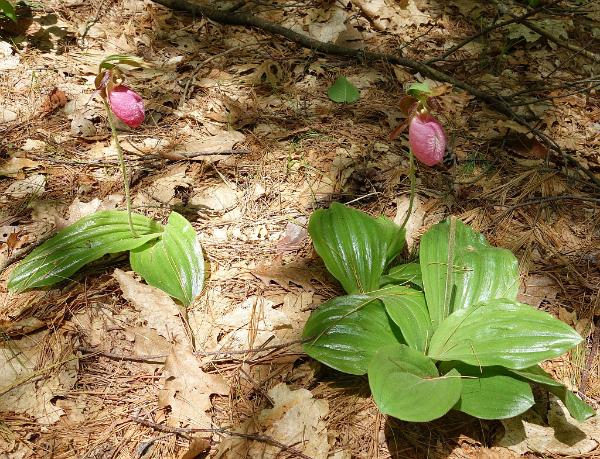
Lady's Slippers - Hopedale Parklands - June 4, 2019 These pictures were all taken in the Parklands on the west side of Hopedale Pond. Hopedale Wildflowers Menu HOME |
Lady Slipper Growth & Survival A stubborn plant, the lady slipper can take many years to grow and develop from seed to mature plants. They rely on a process called symbiosis to survive, which is typical of most orchid species. Symbiosis is when an organism, in this case a fungus found in the soil, is needed for a plant to grow and thrive. The fungus breaks open the lady slipper seed and attaches to it, passing on the food and nutrients needed for it to flourish. Once the lady slipper plant is mature and producing its own nutrients, the fungus will extract nutrients from the orchid roots. Is the Lady Slipper Endangered? Once established, lady slipper plants will propagate on their own and live for many years if left undisturbed. Because a picked lady slipper will not rejuvenate itself, and the plant has a less than 5% transplant success rate, they are often considered “off limits” to pickers and diggers. Some species of lady slipper are listed as endangered or threatened in New England. Others, like the common Pink Lady’s Slipper, are listed as “special concern” under the Native Plant Protection Act. Although regulations on picking or transplanting lady slipper plants vary from state to state, either practice is generally discouraged and it is illegal to pick or dig up lady slipper plants on Federal properties. NewEngland.com . |
Below - photos from the same area taken two days after the ones above. |
